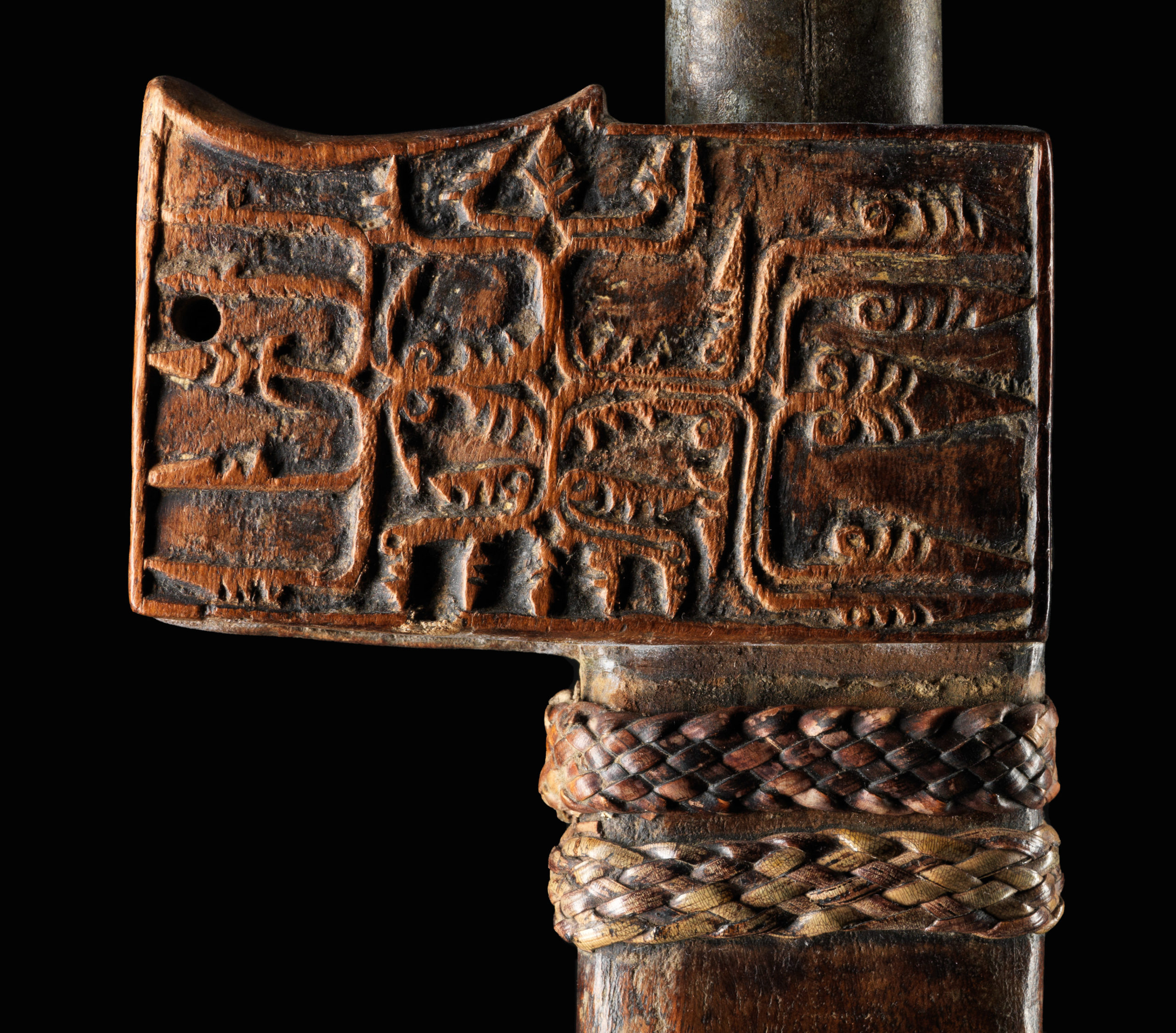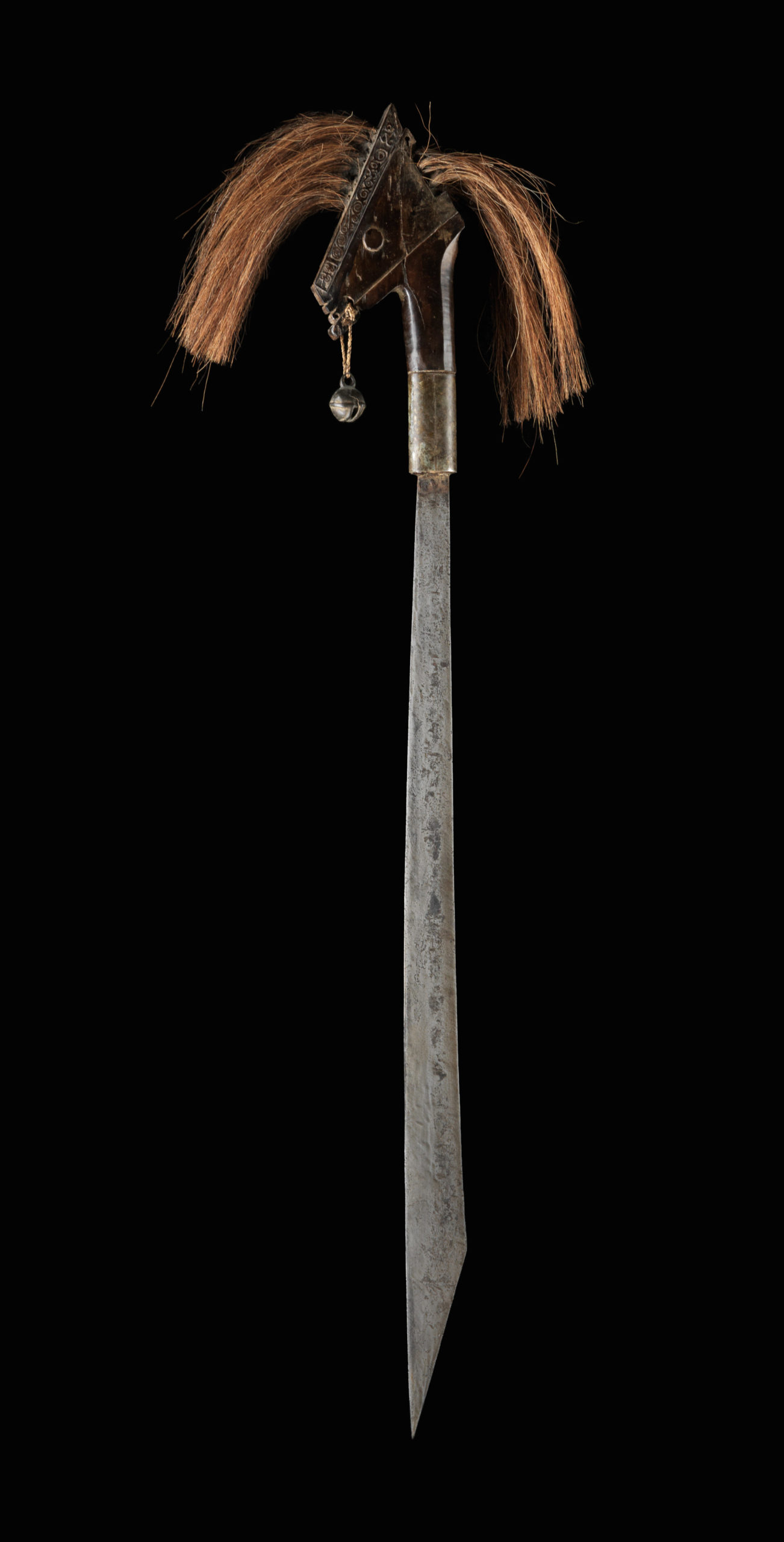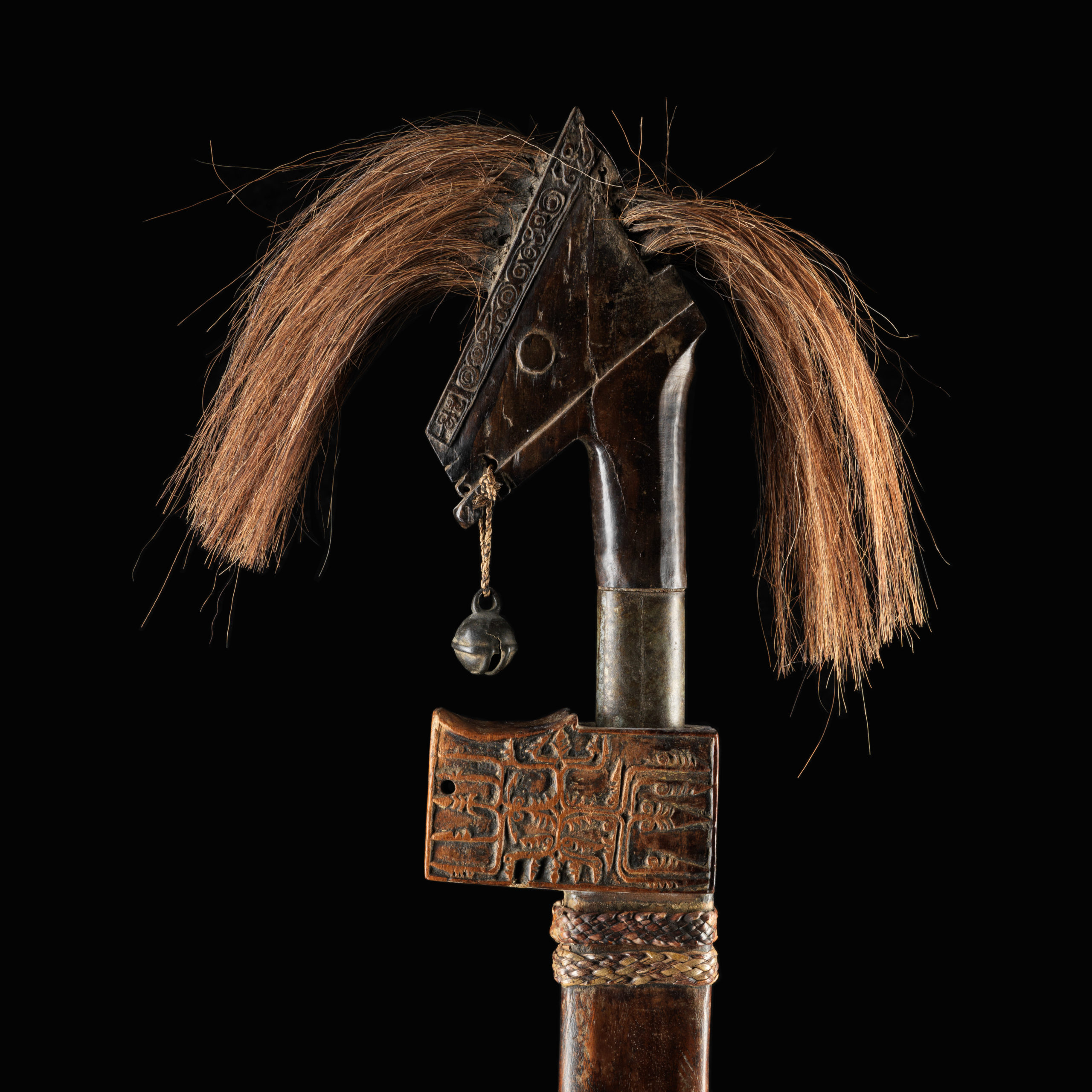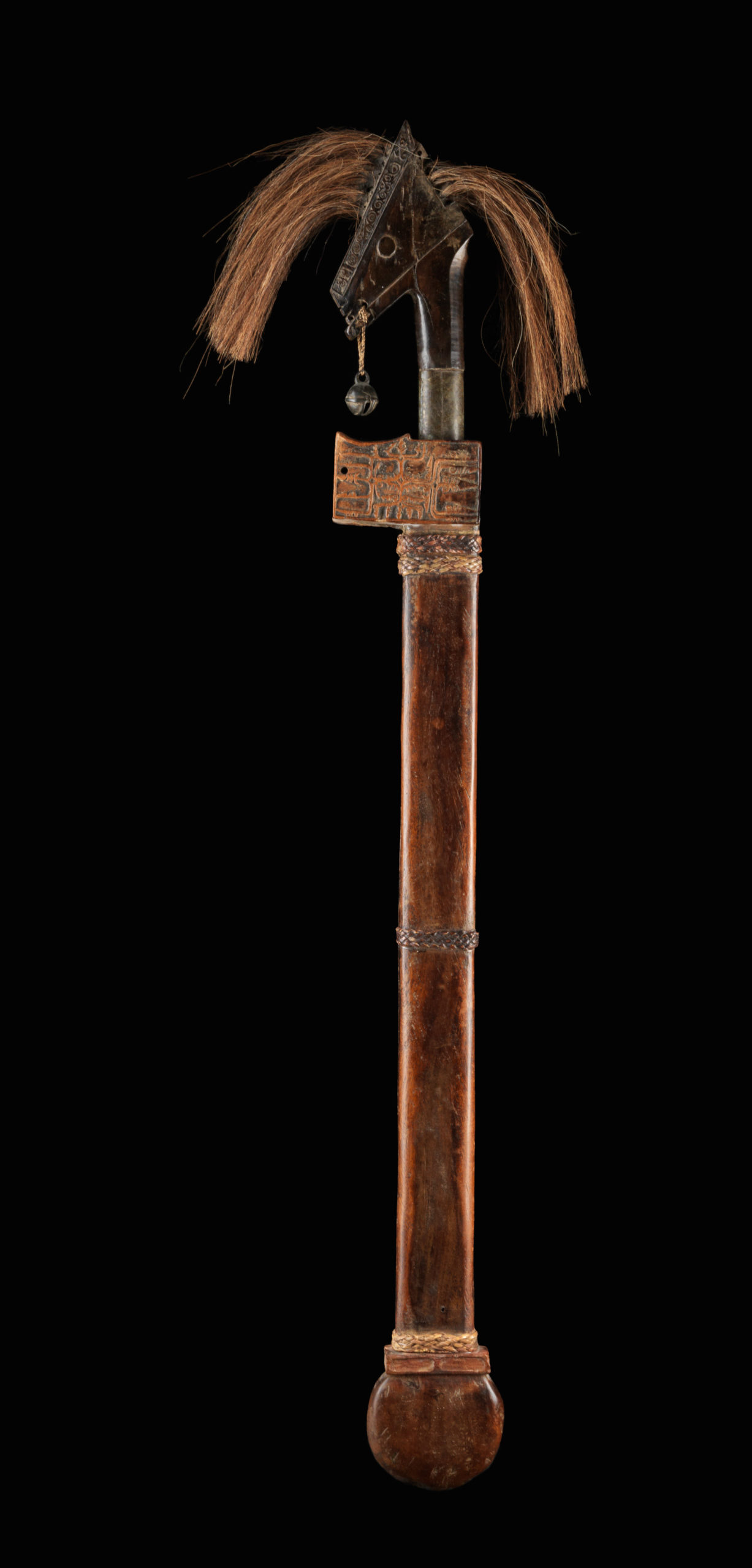Sword “surik”
This large sword has a single-edged, straight, forward widening blade with an abruptly sloping tip. It is unadorned and gives the impression of a robust weapon of utility. The handle is made of indeterminate wood. It has a straight handle and is protected against splitting in the lower part by a long non-ferrous metal ferrule. The pommel is large and flat and has a broad “beak” pointing towards the blade, which makes it very safe to handle. Two tufts of hair are inserted in the neck, which might have come from representatives of the local horse breed (“Timor pony”). Two raised bar-like surfaces on the pommel converge at a flat angle, giving the whole an abstract, almost modernist habitus. The upper of these bars is carved in low relief with spiral ornaments in unspecific groupings. At the end of the tapering “nose” is a spherical bell suspended on a short string, commonly known as the “tiger bell”. Bells of this type have been in circulation as mass produced export goods from Thailand, Myanmar and China for centuries. A raised eye (mata) is emblazoned in the centre of the pommel, discreetly hinting at the original meaning of the handle as a stylised mythical creature. It can be considered certain that such zoomorphic knobs were inspired by South Indian influences in the first millennium.
The sheath has a thickened rounded foot. It is held together by roughly braided rattan bands. Remarkable is the mouthpiece, which is wide and box-shaped. There are three interpretations for the decorative forms of the mouthpiece. The first is that of the world tree as the central motif. The World Tree reaches with its crown into the upper world and its roots into the underworld and embodies the duality of all forms of existence. The second interpretation is the interpretation of this ornamental field as a mythical village where life began. It was in this village that the first procreative murder took place, whereby all useful plants and the moon as a calendar-making instance were formed from a killed primordial being. In dances this cycle of death and renewal is re-enacted. In this sense, the mouthpiece is to be interpreted as a “dancing place”, which stands for a mythically important ancestral village and the origin of human culture. The third interpretation sees the ornamentation as a totem creature: either as a mythical turtle carrying the Middleworld, or as an ancestral animal of the nobility, a crocodile.
The essential social basis of ritual warriorism on Timor is a hierarchical social order and a stringent clan consciousness. On Timor, the specialised warriors or pioneers, the meo, have the task of organising and moderating ritualised warfare and the taking of life. The battles between the empires of ancient Timor were strictly ritualised. As soon as a man was killed or seriously wounded, the fight usually ended. Swords (surik, from old Javanese “curiga”, sword) are a badge of status and social rank. On the Ikat textiles on Roti, Sumba and Timor, surik are depicted as a representative possession of the nobility. The art of the Atoin Meto (formerly: Atoni) tends to be dual, or “bipolar” and axial, according to cosmology. The crocodile and the turtle, each in abstract form, are the determining motifs. The aristocrats, maramba, on the male side traced back to the crocodile Uis Neno, and one of their main insignia was the turtle, which in traditional symbolism is the carrier of the middle world.
Sonri are also known on the offshore island Alor north of Timor under the same name or as well as sonbi.
| Object | Sword “surik”, “sonri”, “bada(pada)” |
| Cuture |
Timor or Alor |
| Time | 19th/20th century |
| Dimensions | Length 106 cm |
| Material | Steel, wood, non-ferrous metal, rattan, hair (Timor pony?) |








